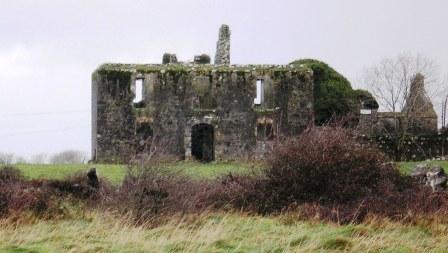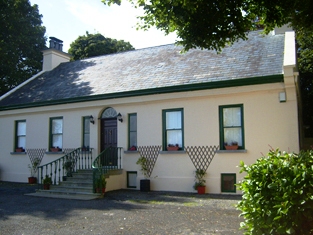Rineen
Houses within 5km of this house
Displaying 11 houses.
Houses within 5km of Rineen
Displaying 11 houses.
| House name | Description | |
|---|---|---|
| Doorus House | Dooras House was built by the French family in the 18th century. At the time of Griffith's Valuation Count de Basterot was leasing this property from Henry Comerford. In 1906 Count de Basterot was the owner of a mansion house valued at £10 here. O'Connell records that the house was demolished about 1917-18. | |
| Newtown Lynch | O'Connell states that Newtown was built around 1795. At the time of Griffith's Valuation the townland of Doorus Park was part of the estate of Patrick Lynch of Renmore. John W. Lynch is recorded as the owner of this mansion house, valued at £13, in 1906. On the Ordnance Survey maps it is labelled Newtown House. It has been in ruins since the 1930s. |

|
| Hermitage or Neptune | O'Connell states that this house was originally built by Dr. Nicholas Archdeacon, probably about 1805-6. It was later the property of the Blake family and in 1862 the house was known as Hermitage House and was the residence of Francis Blake Forster. It has been in ruins since the mid-20th century. |

|
| Roo | The original Roo House was a single story L-shaped building. Only a small portion, which has been incorporated into farm buildings, now remains. Tradition indicates that it was leased by Bishop Nicholas Archdeacon sometime in the early 19th century. In the 1830s it was the residence of a Mr. Sellers. The house and over 100 acres was leased by the Curtin family from the Gregory estate in the 1840s but the Gregorys were later obliged to sell this part of the estate. A two-story house, now derelict, was erected on the site in the early 20th century. The property is still held by the Curtin family. |

|
| Thornville Lodge | O'Connell states that this house was built by the Bricknell or Bucknell family in the later 18th century. It was later occupied by the Bishop of Kilmacduagh, Dr. Ffrench. Kinvara parish records also indicate that Arthur and Clare Ireland lived here in the 1830s. This may be the same Arthur Ireland who held the post of Burser at Queen's College, Galway in the 1850s. The house is still extant. | |
| Neptune Vale | O'Connell states that Neptune Vale was the original de Basterot house in the Kinvara area, probably built in the late 18th century. The house was demolished sometime in the mid-19th century although at the time of Griffith's Valuation, it was still owned by Count de Basterot and valued at £4. One of the outbuildings was possibly subsequently converted into a dwelling house. | |
| Doorus Cottage | O'Connell states that Doorus Cottage was built by the de Basterot family in the 1860s, possibly with materials from the demolished Neptune Vale. It had several owners before being given to An Oige in 1961 as a youth hostel. |

|
| Harbourhill Lodge | Marked as Habourhill Lodge on the first Ordnance Survey map, this house was occupied by the Reverend Michael O'Fea at the time of Griffith's Valuation and held from John Bindon Scott. It later became a Constabulary barracks, now a ruin. | |
| Corranroo Lodge | Occupied by Burton Bindon in 1837 and by Samuel Bindon in the mid 19th century, who held the property from Colonel Henry White with 11 acres. Weir writes that it was the home of the Misses Lloyd in the early 20th century, one a painter and the other a sculptress. The house is no longer extant. | |
| Cartron | A 19th century house used as a summer residence by the Brady/Brady Browne family, now a ruin. | |
| Delamaine Lodge | According to O'Connell, Delamaine Lodge was occupied by a Huguenot merchant, Captain William de la Maine, in the late eighteenth century. It was later owned by the de Basterort family and afterwards by the Gregory estate. It is still extant. |

|

